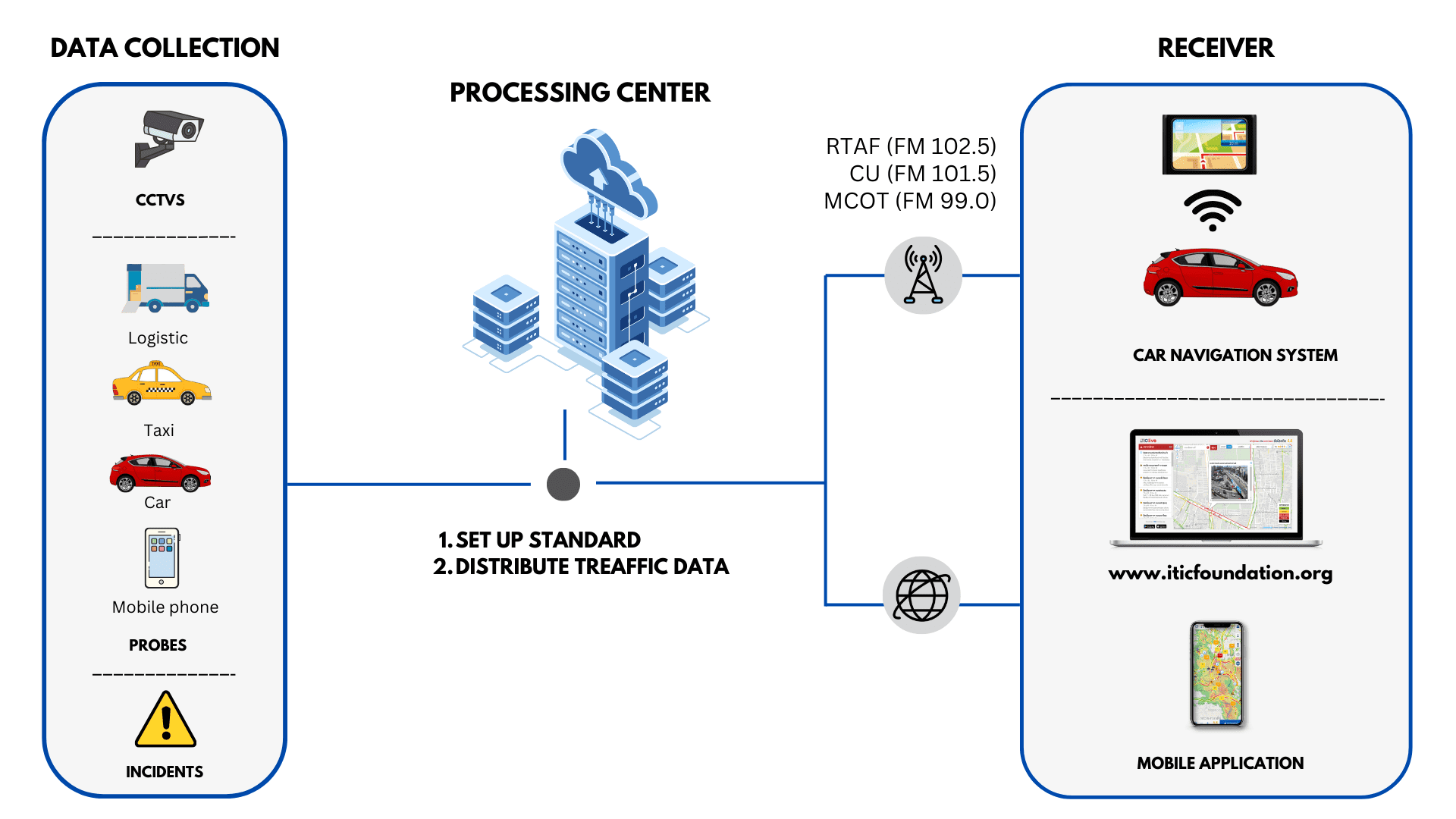The iTIC’s process begins with collecting public traffic data from CCTV cameras provided by the Thai Traffic Police, Expressway Authority of Thailand (EXAT), and Bangkok Metropolitan Administration (BMA). Then, the data is combined with that collected from taxis, buses, logistics, and mobile phone probes by iTIC (Tier 1). After that, the combined traffic data is processed into a nationally standardized format with high quality, ready to be broadcast in real-time.
The traffic information output can then be distributed by Tier 2 via various carriers such as GPRS (mobile phone) or ADSL (internet). An internet user can view real-time traffic information by visiting www.iticfoundation.org.
The traffic information is also available through FM multiplex 102.5 MHz by the Royal Thai Air Force and 88.5 MHz by the Royal Thai Navy under the RDS-TMC (Radio Data System-Traffic Message Channel) standard, which has been widely used in Europe and the United States. Travelers can receive traffic information via car and Portable Navigation Device (PND) without airtime expenses.

In the near future, more organizations (Tier 2) will seek to obtain traffic information from iTIC with value-added functions such as Points of Interest (POI) before disseminating it to end users. During the early stage, the traffic information coverage will focus on Bangkok, its vicinity, and interstate highways. However, iTIC plans to extend the traffic service nationwide.
The Intelligent Traffic Information Center Foundation or iTIC was officially approved the registration by Ministry of Interior as a non-profit organization on June 14, 2010 with a registered capital of 500,000 Baht supported by Thai ITS Association.
Head Office for contact
Unit 704, 7th floor, 100th year Engineering Building Faculty of Engineering, Chulalongkorn University 254 Phayathai Road, Pathumwan, Bangkok 10330
Tel. 02-218-6450